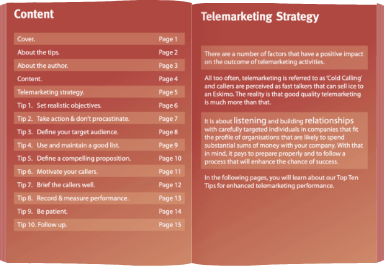One of the biggest challenges many telemarketers face is the inability to overcome buyer objections. Telemarketing objections are a fact of life. No matter how good you or your company’s products are, buyers are often locked in to other suppliers. They may say they buy on price alone (although I doubt that’s the whole story) or have worked with their current supplier for twenty years. So, dealing with telemarketing roadblocks and objections is an essential factor in telemarketing success. You certainly won’t succeed every time but you will magnify your chance of success if you use our suggested process below for dealing with telephone objections.
Find out our top 7 tips for handling objections
1. Build rapport
It is unlikely that a decision-maker will give you a license to ask anything if you haven’t built up some form of rapport. And that’s from the very first words that come out of your mouth when the prospect answers the phone. That means avoiding classic telesales speak like “how are you today” or “Hello Mr Jones, I’m calling from GSA and we are manufacturers and suppliers of cleaning products and I’m calling to introduce my company to you.” The key is to engage and to sound friendly, authoritative, professional, and consultative. Don’t over-sell. Don’t talk too much from the start and try to engage in a two-way discussion rather than a one-way sales pitch. Using this strategy, you’re less likely to get roadblock objections thrown at you and you’re more likely to be able to discuss and anticipate those objections before they arise.
2. Ask Good Questions
Throughout an effective telemarketing call, the caller intersperses relevant information with pertinent and timely questions. It is important to ask a good blend of open questions to unearth information and closed questions for qualification. But take care that it doesn’t come across like an interrogation or a survey.
Effective questioning techniques are particularly relevant when the prospect has stated his or her objection. The key is to remain calm, don’t jump in, over-react, or even more fatally, over-pitch. Rather, pause and take a little time to ask questions to clarify the objection. This not only shows that you are interested in the prospect, but it also gives more information and time with which to respond and ultimately move towards the objective.
3. Listen
Maybe it is obvious but telemarketing and listening skills go together. It’s not so much about having the gift of the gab. It’s more about the gift of listening and understanding that wins out in the end.
This is about active listening not distracted or passive listening while you’re reading or typing emails. Also, don’t jump in too soon and try to ‘persuade’ the buyer of the error of their ways. Don’t be too hasty in trying to ram your solution down their throat. If they explain why your service isn’t appropriate or timely, listen and periodically respond with a phrase like “I see”. The speaker may divulge a piece of information that will help you sell to them now or in the future. If you don’t listen, the prospect’s next step may well be to put the phone down.
4. Pause and Think
At the first hint of a call not going to plan, salespeople often start defending or emphasizing their company. They default to over-pitching their product features when a buyer hits them with an objection. They forget that the buyer may have an entrenched view and there is no point pushing against a closed door. Telemarketers need to get the buyer to leave it ajar for them.
Allowing oneself time to think is a good thing. A pause and a hmm or a “that’s interesting” demonstrates how the caller is taking the prospect’s objection seriously.
Once again, following this with good open questions (and sometimes specific closed questions to further qualify, will unearth what’s really behind the initial objection and hopefully hold the door open for opportunities.
5. Handle and Respond
The better the questions and clarification in the earlier part of the discussion and after the initial objection, the more likely rapport will have been established and the better your ability to handle and respond. When you’re ready, you can use an objection-handling method that you believe will work best for the specific objection. We will cover specific objection-handling techniques in a future blog. Sometimes you can challenge the objection head-on e.g. “it’s interesting that you feel we’re expensive when most of our customers tell us we’re really well priced against competition….” Sometimes you can reposition the objection in the context of some other factor within the discussion e.g. “I understand your point about price being a factor. In terms of durability, what level of quality are you looking for?”
The essence is to consider a relevant approach that doesn’t alienate the buyer and ensures that the gates of the conversation remain open
6. Check whether you’ve Answered the Objection
Once a response has been provided, it is wise to establish whether the objection-handling worked! You can ask the prospect if they feel that you have answered the question. If the buyer’s response is positive and they indicate that they understand the answer to the objection, ask if there are any more concerns. As necessary, handle these new or outstanding objections using the same process.
7. Close
Of course, handling buyer objections isn’t as simple as providing a response followed by the buyer saying “okay then” and everyone lives happily ever after. However, our end game is to gain some kind of consensus so that we can move towards our outcome. By all means go for a relevant close IF the prospect indicates their objections have been answered. That might mean booking a face-to-face appointment, setting up a demo, booking attendance at an event, or some other result.
Whatever the desired outcome is, it is unlikely that you will achieve this until you’ve satisfied the buyer’s requirements in terms of responding to their objection.
We hope that you’ve enjoyed reading these telemarketing tips. If you’d like more information, take a look at our other blog articles or visit our knowledge bank.






